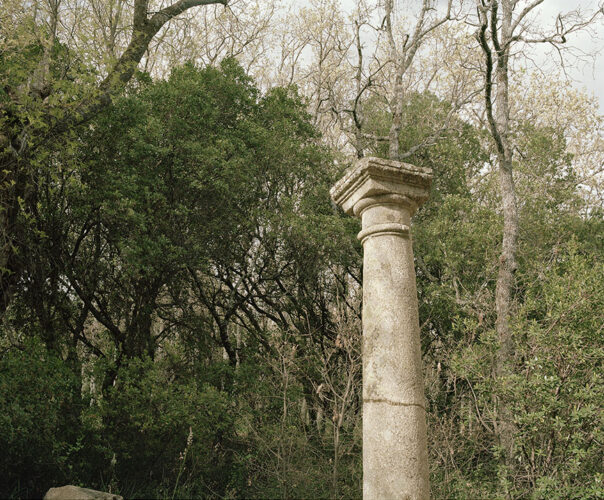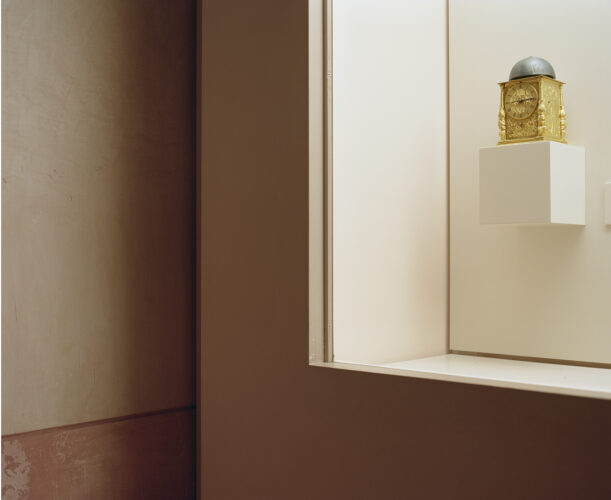EXPOSICIONES
Las horas del sol
Bleda y Rosa
4 jun. — 7 sep. 2025
Galería de las Colecciones Reales
— Madrid
Inauguración
4 de junio, 13h
Organiza
Patrimonio Nacional, ACCIONA y PHotoESPAÑA
Horarios de la sede
Lunes a sábado
10:00–20:00
Domingo
10:00–19:00
Sede
Galería de las Colecciones Reales
Bailén, s/n
Entrada
Mapa
Sede
Jardines del Campo del Moro
Virgen del Puerto, 1
28013 Madrid
www.patrimonionacional.es
Cuadernos de campo es un programa de tres años que dirige su mirada a los espacios naturales de los Reales Sitios del Patrimonio Nacional. Fruto de la colaboración entre dicha institución, ACCIONA y PHotoESPAÑA, el programa pone en contacto a fotógrafos consagrados de nuestro país con entornos naturales privilegiados, con el fin de sensibilizar al público sobre la necesaria protección del medio ambiente.
La primera edición de Cuadernos de campo fue desarrollada por Javier Vallhonrat en La Granja de San Ildefonso, prestando atención a sus ingenios del agua. Esta nueva entrega del proyecto se fija en el sol como fuente de energía y de vida fundamental. Los fotógrafos Bleda y Rosa, Premio Nacional de Fotografía 2008, han desarrollado una nueva serie en el Monasterio de San Jerónimo de Yuste bajo el título Las horas del sol.
Este bello emplazamiento fue la última morada del emperador Carlos V (1500 – 1558). Tras abdicar, el monarca buscaba un lugar de retiro, apartado de las cortes de Valladolid y Toledo, en el que poder descansar, atender a su delicada salud y preparar su alma antes de fallecer. El lugar elegido fue un pequeño monasterio de la comarca de la Vera, fundado a comienzos del siglo XV. Su arquitectura original fue transformada en profundidad para poder incluir la casa palacio y los jardines que tanta importancia tendrían en el ocaso de su vida.
Para hacer realidad sus sueños, el emperador se apoyó en el milanés Juanelo Turriano, su relojero de Corte, además de ingeniero, matemático, inventor y constructor de autómatas. Juanelo fue responsable del sistema hidráulico que permitió el mejor aprovechamiento de los jardines, además de artífice de muchos de los relojes que marcaron las últimas horas del rey.
Bleda y Rosa han aproximado su mirada al entorno natural de Yuste a partir de tres focos de interés de Carlos V: la astronomía, la botánica y los ingenios mecánicos, además de establecer una dicotomía entre la naturaleza y su ordenación, entre la vida y la visión renacentista, entre lo tangible y lo que contemplamos desde la ventana.
The Field Notebooks project is a three-year programme focusing on the natural spaces in National Heritage’s Royal Sites. The outcome of a partnership between that institution, ACCIONA and PHotoESPAÑA, the programme puts famous photographers from Spain in contact with privileged natural settings in order to raise the public’s awareness of the necessity of environmental protection.
The first edition of Field Notebooks was created by Javier Vallhonrat at La Granja de San Ildefonso, with a focus on its water devices and the most remote spots on the property, those where ‘nature encounters human intelligence’. This new instalment of the project focuses on the sun as an essential source of energy and life. The photographers Bleda y Rosa, 2008 National Photography Award winners, have developed a new series in the Monastery of San Jerónimo de Yuste entitled The Hours of Sunlight.
This beautiful site was the last home of Emperor Charles V (1500–1558). After abdicating the throne, the monarch sought a retreat far from the courts of Valladolid and Toledo where he could rest, care for his delicate health and prepare his soul for death. The site chosen was a small monastery in the county of La Vera founded in the early fifteenth century. Its original architecture was given an in-depth overhaul to include the palatial home and gardens that were so important in his early years, with a design that evoked the Flemish landscapes of his childhood, while the Spanish-Muslim ones reminded him of his deceased wife.
Charles V loved fruit trees, especially citrus, so they feature prominently in the edible garden of Yuste. He also ordered peach, plum, cherry, pear, apple, quince, almond, walnut and chestnut trees planted, in addition to edible and medicinal plants.
To make his dreams come true, the emperor relied on his court clocksmith from Milan, Juanelo Turriano, who was also an engineer, mathematician, inventor and builder of automata. Turriano was responsible for the hydraulic system that made the gardens more productive, in addition to being the mastermind behind many of the clocks that kept time to the king’s last hours.
Bleda y Rosa have focused on the natural environment in Yuste through the lens of three of Charles V’s interests: astronomy, botany and mechanical devices. They have also established a dichotomy between nature and its organisation, between Renaissance life and vision and between the tangible and what we see through a window.



